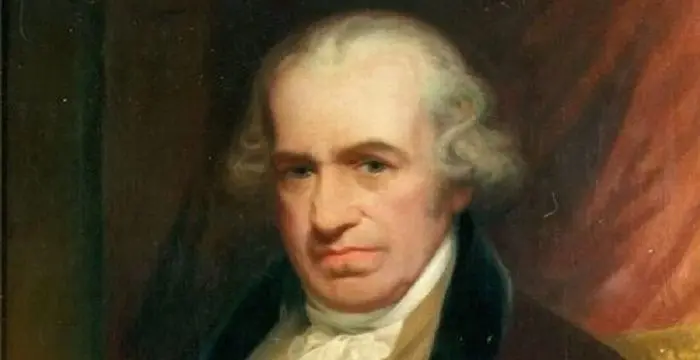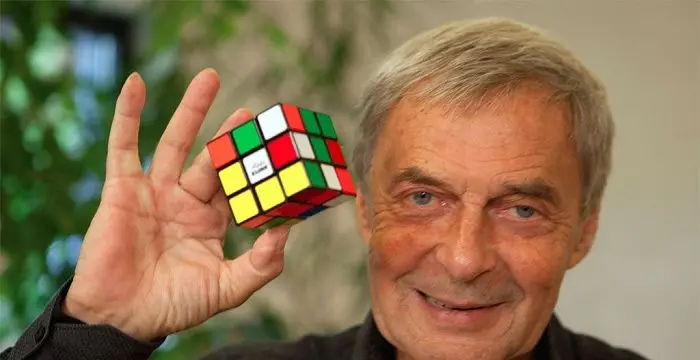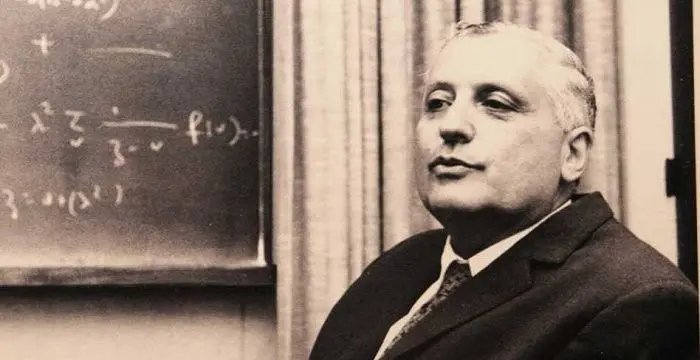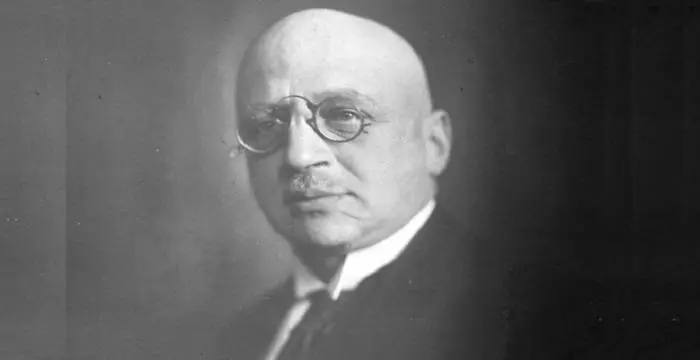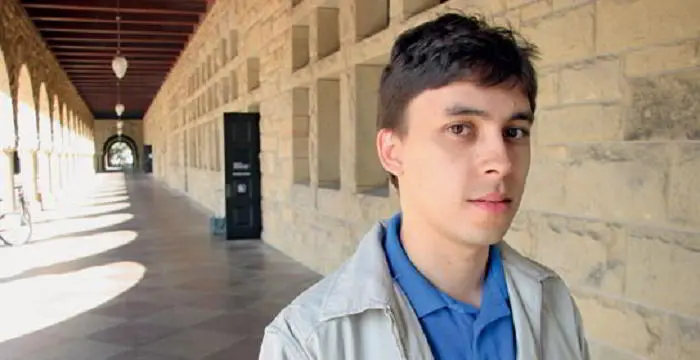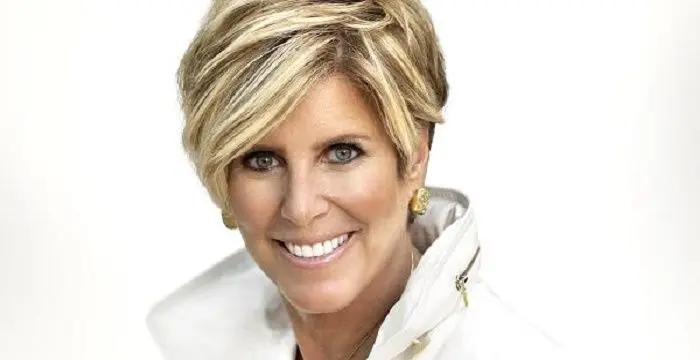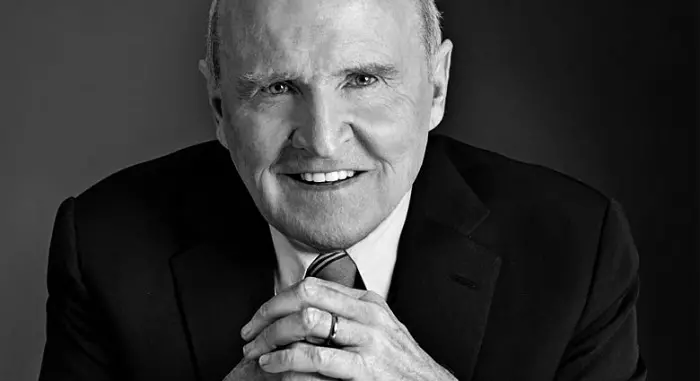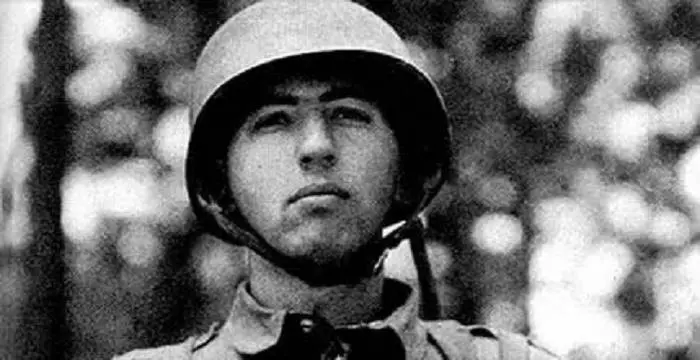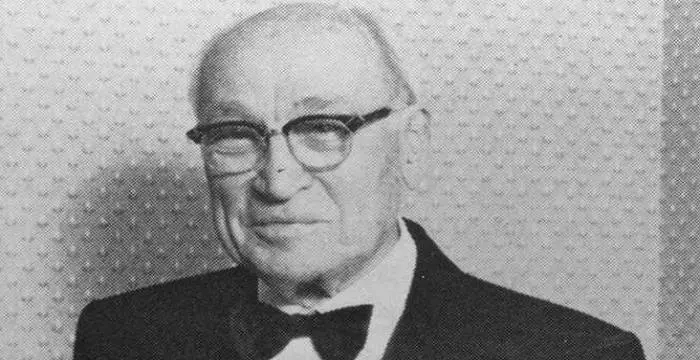
Arnold Orville Beckman - University Of Illinois, Life Achievements and Childhood
Arnold Orville Beckman's Personal Details
Arnold Orville Beckman was a renowned inventor and chemist who invented the world’s first pH meter and spectrometer
| Information | Detail |
|---|---|
| Birthday | April 10, 1900 |
| Died on | May 18, 2004 |
| Nationality | American |
| Famous | University Of Illinois, Inventors & Discoverers, Chemists, Physical Chemists |
| Universities |
|
| Notable Alumnis |
|
| Founder / Co-Founder |
|
| Birth Place | Cullom |
| Gender | Male |
| Sun Sign | Aries |
| Born in | Cullom |
| Famous as | Chemist |
// Famous Chemists
Henry Cavendish
Henry Cavendish was a theoretical chemist and physicist, renowned for discovery of hydrogen and calculation of the mass of earth. To know more about his childhood, profile, timeline and career read on
Walter Kohn
Nobel Laureate Walter Kohn was an Austrian-born American theoretical chemist and physicist. Check out this biography to know about his childhood, life, achievements, works & timeline.
Jabir Ibn Hayyan
Jabir Ibn Hayyan was a medieval era polymath. Check out this biography to know about his life, works and achievements.
Arnold Orville Beckman's photo
Who is Arnold Orville Beckman?
Arnold Orville Beckman was a famous chemist, inventor and philanthropist from America. With a keen insight and eye for detail, Arnold always had a knack for solving problems. It was in his childhood that he chanced upon a textbook in chemistry and thus began his life-long association with the subject. While still in school, Beckman founded a business venture that analysed the composition of natural gas. While working at the Western Electric Company he gained an in-depth understanding of electronic circuits. He utilised his knowledge of chemistry and electronics to solve many problems in his later life. He developed the world’s first pH meter that was used to measure acidity of a given solution. He then created a device that could calculate the energy of light in visible, infra-red and UV spectrum. He modified the potentiometers used in the pH meter to develop the helipot that could be used in airplanes and ships. The chemist also worked with Californian government in their efforts to mitigate the harmful effects of Los Angeles smog. He was also involved in the Manhattan Project, which created the nuclear bombs. Orville invented the dosimeter which could indicate the levels of exposure to ionizing radiation. The contributions of this inventor to the human race are numerous; read on to know more about his life and works.
// Famous Inventors & Discoverers
Nikola Tesla
Nikola Tesla was a Serbian-American inventor, best known for his development of alternating current electrical systems. This biography of Nikola Tesla provides detailed information about his childhood, life, achievements, works & timeline.
Thomas Newcomen
Thomas Newcomen was a British inventor who developed the world’s first steam engine. Browse through this biography to learn in details about his life, career, works and timeline.
Erno Rubik
The famous inventor and educationist, Erno Rubik is known world-wide for his invention the ‘Rubik’s Cube’. To know more about the childhood, profile, timeline and career of this famous architect-inventor read on.
Childhood & Early Life
On April 10, 1900, Arnold Orville Beckman was born to parents George Beckman and Elizabeth Ellen Jewkes. George owned a blacksmith shop in the small village of Cullom in the United States.
The village comprised of people mostly from the farming background but the young lad was always interested in understanding the know-how of the world. His father encouraged his inquisitive nature and when Arnold chanced upon a chemistry textbook titled, ‘Fourteen Weeks in Chemistry’; George helped him establish a laboratory of his own in a tool shed.
After Elizabeth’s demise in 1912, closed shop to work as a salesman for blacksmithing tools. His new job required him to travel a lot thus the children were put under the care of a maid. During this time Orville joined a local band as a pianist and even worked as a “official cream tester” in a neighbourhood shop.
In 1914, the family moved to Normal, where the children attended ‘University High School’ affiliated to the ‘Illinois State University’. The following year, the prodigious mind was allowed to attend university level lectures in chemistry by Professor Howard W. Adams.
Career
The youngest child in the family, he was the most industrious and even embarked on a business venture while still attending high school. His research laboratory, ‘Bloomington Research Laboratories’, studied the chemical components of the natural gas and other petroleum products produced by the local gas company.
After completing High School with flying colours in 1918, he decided to join the army and served as a chemist for the defence forces employed in WWI. The same year on his eighteenth birthday, he decided to join the United States Marine Corps.
He attended the three month training in the boot camp in South Carolina and was then posted at the Brooklyn Navy Yard. But ceasefire was enforced before he could be assigned to active service.
After the WWI, he enrolled at the research inclusive ‘University of Illinois at Urbana–Champaign’, in 1918. Beckman, who had initially decided to pursue a major in organic chemistry, later opted for physical chemistry after suffering from ill health caused by toxic effects of mercury.
Under the tutelage of fine teachers like Worth Rodebush, T. A. White, and Gerhard Dietrichson, in 1922 he completed his undergraduate studies in chemical engineering. At the university he was a member of frat groups like the ‘Alpha Chi Sigma’ and the ‘Gamma Alpha Graduate Scientific Society’.
During his masters, Arnold was particularly interested in the thermodynamics of aqueous ammonia solutions. In the year 1923 he completed his masters in physical chemistry from Illinois.
He then moved to California and enrolled at ‘California Institute of Technology’ (‘Caltech’) for his post graduate studies. But only after a year at the institute, he left Caltech and took up a job in the ‘Western Electric Company’ in New York. It was working in the engineering department, that he was introduced to circuit design by physicist Walter A. Shewhart and thus began his fascination with electronics.
In the year 1926, Beckman went back to Caltech to complete his post graduate studies. For his doctoral dissertation he worked on devising a method to calculate the energy of ultraviolet rays.
After successfully completing the design of the intended device he was awarded a Ph.D. in photochemistry in the year 1928 and offered the position of a research instructor for chemistry at the ‘University of California’.
In 1929, Orville started his teaching career at Caltech, which would span over the next decade. Starting out as a research instructor he was then promoted to the post of professor in chemistry and he taught introductory and advanced graduate level students.
He focussed on the need of precise and accurate instrumentation and his background in electronics helped him gain the approval of his peers and seniors at the university. It was with the consent of his seniors Arthur Amos Noyes, department head and Robert Andrews Millikan, the then President of the University, that he started consulting work outside the institution.
While working for the ‘National Postal Meter Company’ in 1934, Beckman embarked on his first entrepreneurial venture. Unable to find a manufacturer for making a non-clogging ink using butyric acid, which can be used by machines for printing postage, Beckman started his own ink manufacturing establishment ‘National Inking Appliance Company’.
Though he developed the product and even obtained a patent for the non clogging ink, he failed to convince any buyers. The company he started with two of his students was used later for a different product.
Another of his client Sunkist Growers was facing difficulties while measuring the acidity of their products such as pectin or citric acid. As sulphur dioxide was a component used in the manufacture of the products, using litmus paper to determine acidity was not a viable solution.
When the company approached Arnold, he utilised his skills in glassblowing, to design a vacuum-tube amplifier. Impressed by the working prototype of the apparatus, the company ordered for a second piece.
Improving his design of the acidity measuring device, he made the apparatus more portable and easier to handle. Thus came into being the world’s first ‘pH meter’, which was patented to Beckman in 1934. Initially the ‘Arthur H. Thomas Company’ which was a major player in the field of scientific instruments originating in Philadelphia handled the marketing and distribution of the Arnold’s “acidimeter”.
Propelled by the success of the pH meter, he reinvented his company and named it ‘National Technical Laboratories’ in 1935. With the new company, he focussed on manufacturing scientific instruments which included the pH meter.
The company moved out of the old garage to a bigger precinct and as the sales picked up over the years, Orville quit his job at the university to handle the operations of his company in 1939.
The following year, his loan for establishing a factory was approved and the manufacturing unit was built over a sprawling area of 12,000 sq.ft. in South Pasasena. Also in 1940, the research team of National Technical set out on the goal of designing a simpler device for measuring the light energy in visible spectrum.
The resulting model, was easy-to-use and efficient, received the credibility of the ‘National Bureau of Standards’ and was named as the ‘DU spectrophotometer’. The device significantly reduced the time required for obtaining results from chemical analysis of samples. The spectrophotometer was also used in production of penicillin during WWII.
Another important invention by Beckman came in the year 1942, when he was handed the assignment to develop a spectrophotometer that could measure the light energy in the infrared zone. Beckman was instructed to be highly discreet by the ‘Office of Rubber Reserve’, thus he could not publish the developments of his ‘IR-1 Spectrophotometer’.
He improvised the model of IR-1 Spectrophotometer to encompass the choice of using a single beam of light or double beam for analysis, in 1953. The earlier model only had the option of using a single infrared beam but the dual beam model allowed users to calculate and compare sample energy with a reference, simultaneously.
He also improvised the design of the knob or the helical potentiometer dubbed as “helipot” so that they could be used in airplanes, ships or submarines. With a board, which was still wary of the emerging field of electronics, Beckman started ‘Helipot Corporation’ which dealt with electronics hardware.
The perspicacious inventor was then involved in the production of the ‘Pauling oxygen meter’ for the ‘National Defense Research Committee’, which was designed by his ex-colleague at Caltech, Linus Pauling. The device was manufactured by ‘Arnold O. Beckman, Inc.’, another spinoff and Arnold used a miniature glass-blower designed by him to create the glass dumbbells used in the oxygen meter.
The devise which was initially used to measure concentration of oxygen in submarines and airplanes during the World War, were later used to supervise the oxygen levels in incubators used for premature babies.
The micro-ammeter, he invented by remodelling his pH meter and the dosimeter, used for measuring exposure to ionizing radiation, were utilised by the scientists working on the ‘Manhattan Project’ during WWII.
From 1948-52, he was designated as the scientific consultant to the ‘Air Pollution Control Officer’ of the newly established ‘Air Pollution Control Districts’ in Los Angeles.In this capacity he collaborated with chemist Arie Jan Haagen-Smit and worked on developing methods to combat the ‘Los Angeles smog’.
He designed a device to measure the smog and outlined an advisory charter for the Californian governor. He also contributed to the creation of the non-profit ‘Air Pollution Foundation’, which served to educate masses and raise funds for further research on smog.
In 1950, ‘National Technical Laboratories’ was rechristened and by then Orville owned a controlling interest in the company. ‘Beckman Instruments, Incorporated’, issued stocks on the ‘New York Curb Exchange’ for the first time in 1952 and in subsequent years the company underwent significant expansion.
In 1954, with the acquisition of ‘Specialized Instruments Corp.’, Beckman Instruments delved into manufacture of centrifuges. The following year Arnold he funded the ‘Shockley Semiconductor Laboratory’ which was established as a subsidiary of his own company and was headed by the Nobel laureate William Shockley.
In 1958, Beckman integrated the ‘Helipot Corporation’ into Beckman Instruments and named it the Helipot Division. Two years later he sold the semiconductor laboratory to ‘Clevite Transistor Company’.
The Systems Division, in Arnold’s company, which was formed after acquiring the ‘Berkeley Scientific Company’ during 1950s, dealt with manufacture of analog computer systems for clients which included NASA and aerospace companies like Boeing.
Major Works
Throughout his career, Arnold invented many devices like the pH meter, spectrometer, dosimeter and the helical potentiometer. His company the ‘Beckman Instruments’ became one of the leading American manufactures of biomedical laboratory instruments. Berliner was even involved in the emerging field of computers and contributed to what became the Silicon Valley.
Awards & Achievements
Throughout his career Arnold was presented with many awards and honours which include the Hoover Medal and Tolman Award.
In 1988, he was given the ‘National Medal of Technology’ and the following year he received the ‘National Medal of Science and ‘Presidential Citizens Medal’.
The eminent philanthropist was also conferred upon the ‘Public Welfare Medal’ and ‘Othmer Gold Medal’.
Beckman was made a member of the ‘National Inventors Hall of Fame’ in Ohio in 1987 and he was even conferred upon the ‘Lifetime Achievement Award’ from the organization.
Personal Life & Legacy
During the thanksgiving of 1918, Arnold met Mabel Stone Meinzer at YMCA, and before long the two got engaged.
The couple exchanged nuptial vows on June 10, 1925 and Mabel followed Beckman to California the following year.
At the age of 104, this great scientific mind breathed his last on May 18, 2004 in California. He was interred in Illinois at the ‘West Lawn Cemetery’.
// Famous Physical Chemists
Willard Libby
Willard Frank Libby was an American physical chemist who was awarded the ‘Nobel Prize’ in Chemistry in 1960. This biography profiles his childhood, life, career, research, achievements and timeline.
Ilya Prigogine
Ilya Prigogine was a Russian-born Belgian physical chemist who was awarded the Nobel Prize for Chemistry in 1977. This biography of Ilya Prigogine provides detailed information about his childhood, life, achievements, works & timeline.
Fritz Haber
Fritz Haber was a German chemist who won the 1918 Nobel Prize in Chemistry for the synthesis of ammonia from its elements. Check out this biography to know about his childhood, life, achievements, works & timeline.
Arnold Orville Beckman's awards
| Year | Name | Award |
|---|---|---|
Other | ||
| 1999 | Public Welfare Medal | |
| 1989 | National Medal of Science for Physical Science | |
| 0 | 1988 - National Medal of Technology and Innovation | |
| 0 | Presidential Citizens Medal | |
| 0 | 1981 - Hoover Medal | |
Arnold Orville Beckman biography timelines
- // 10th Apr 1900On April 10, 1900, Arnold Orville Beckman was born to parents George Beckman and Elizabeth Ellen Jewkes. George owned a blacksmith shop in the small village of Cullom in the United States.
- // 1912After Elizabeth’s demise in 1912, closed shop to work as a salesman for blacksmithing tools. His new job required him to travel a lot thus the children were put under the care of a maid. During this time Orville joined a local band as a pianist and even worked as a “official cream tester” in a neighbourhood shop.
- // 1914In 1914, the family moved to Normal, where the children attended ‘University High School’ affiliated to the ‘Illinois State University’. The following year, the prodigious mind was allowed to attend university level lectures in chemistry by Professor Howard W. Adams.
- // 1918After completing High School with flying colours in 1918, he decided to join the army and served as a chemist for the defence forces employed in WWI. The same year on his eighteenth birthday, he decided to join the United States Marine Corps.
- // 1918After the WWI, he enrolled at the research inclusive ‘University of Illinois at Urbana–Champaign’, in 1918. Beckman, who had initially decided to pursue a major in organic chemistry, later opted for physical chemistry after suffering from ill health caused by toxic effects of mercury.
- // 1918During the thanksgiving of 1918, Arnold met Mabel Stone Meinzer at YMCA, and before long the two got engaged.
- // 1922Under the tutelage of fine teachers like Worth Rodebush, T. A. White, and Gerhard Dietrichson, in 1922 he completed his undergraduate studies in chemical engineering. At the university he was a member of frat groups like the ‘Alpha Chi Sigma’ and the ‘Gamma Alpha Graduate Scientific Society’.
- // 1923During his masters, Arnold was particularly interested in the thermodynamics of aqueous ammonia solutions. In the year 1923 he completed his masters in physical chemistry from Illinois.
- // 10th Jun 1925The couple exchanged nuptial vows on June 10, 1925 and Mabel followed Beckman to California the following year.
- // 1926In the year 1926, Beckman went back to Caltech to complete his post graduate studies. For his doctoral dissertation he worked on devising a method to calculate the energy of ultraviolet rays.
- // 1928After successfully completing the design of the intended device he was awarded a Ph.D. in photochemistry in the year 1928 and offered the position of a research instructor for chemistry at the ‘University of California’.
- // 1929In 1929, Orville started his teaching career at Caltech, which would span over the next decade. Starting out as a research instructor he was then promoted to the post of professor in chemistry and he taught introductory and advanced graduate level students.
- // 1934While working for the ‘National Postal Meter Company’ in 1934, Beckman embarked on his first entrepreneurial venture. Unable to find a manufacturer for making a non-clogging ink using butyric acid, which can be used by machines for printing postage, Beckman started his own ink manufacturing establishment ‘National Inking Appliance Company’.
- // 1934Improving his design of the acidity measuring device, he made the apparatus more portable and easier to handle. Thus came into being the world’s first ‘pH meter’, which was patented to Beckman in 1934. Initially the ‘Arthur H. Thomas Company’ which was a major player in the field of scientific instruments originating in Philadelphia handled the marketing and distribution of the Arnold’s “acidimeter”.
- // 1935Propelled by the success of the pH meter, he reinvented his company and named it ‘National Technical Laboratories’ in 1935. With the new company, he focussed on manufacturing scientific instruments which included the pH meter.
- // 1939The company moved out of the old garage to a bigger precinct and as the sales picked up over the years, Orville quit his job at the university to handle the operations of his company in 1939.
- // 1940The following year, his loan for establishing a factory was approved and the manufacturing unit was built over a sprawling area of 12,000 sq.ft. in South Pasasena. Also in 1940, the research team of National Technical set out on the goal of designing a simpler device for measuring the light energy in visible spectrum.
- // 1942Another important invention by Beckman came in the year 1942, when he was handed the assignment to develop a spectrophotometer that could measure the light energy in the infrared zone. Beckman was instructed to be highly discreet by the ‘Office of Rubber Reserve’, thus he could not publish the developments of his ‘IR-1 Spectrophotometer’.
- // 1948 To 1952From 1948-52, he was designated as the scientific consultant to the ‘Air Pollution Control Officer’ of the newly established ‘Air Pollution Control Districts’ in Los Angeles.In this capacity he collaborated with chemist Arie Jan Haagen-Smit and worked on developing methods to combat the ‘Los Angeles smog’.
- // 1950 To 1952In 1950, ‘National Technical Laboratories’ was rechristened and by then Orville owned a controlling interest in the company. ‘Beckman Instruments, Incorporated’, issued stocks on the ‘New York Curb Exchange’ for the first time in 1952 and in subsequent years the company underwent significant expansion.
- // 1953He improvised the model of IR-1 Spectrophotometer to encompass the choice of using a single beam of light or double beam for analysis, in 1953. The earlier model only had the option of using a single infrared beam but the dual beam model allowed users to calculate and compare sample energy with a reference, simultaneously.
- // 1954In 1954, with the acquisition of ‘Specialized Instruments Corp.’, Beckman Instruments delved into manufacture of centrifuges. The following year Arnold he funded the ‘Shockley Semiconductor Laboratory’ which was established as a subsidiary of his own company and was headed by the Nobel laureate William Shockley.
- // 1958In 1958, Beckman integrated the ‘Helipot Corporation’ into Beckman Instruments and named it the Helipot Division. Two years later he sold the semiconductor laboratory to ‘Clevite Transistor Company’.
- // 1987Beckman was made a member of the ‘National Inventors Hall of Fame’ in Ohio in 1987 and he was even conferred upon the ‘Lifetime Achievement Award’ from the organization.
- // 1988In 1988, he was given the ‘National Medal of Technology’ and the following year he received the ‘National Medal of Science and ‘Presidential Citizens Medal’.
- // 18th May 2004At the age of 104, this great scientific mind breathed his last on May 18, 2004 in California. He was interred in Illinois at the ‘West Lawn Cemetery’.
// Famous University Of Illinois
Temple Grandin
Temple Grandin is a well-known American writer, autistic activist and animal expert. This biography profiles her childhood, life, achievements, career and timeline
Jawed Karim
Jawed Karim is a German-American internet entrepreneur, technologist and co-founder of the video-sharing website, YouTube. Check out this biography to know about his childhood, family, personal life, achievements, age, etc.
Suze Orman
Suze Orman is an American television host, financial advisor, author and motivational speaker, famous for her ‘The Suze Orman Show’ on CNBC. This biography profiles her childhood, life, career, works, achievements and timeline.
Jack Welch
Jack Welch is an American business executive famous for serving as the CEO of General Electric. This biography of Jack Welch provides detailed information about his childhood, life, achievements, works & timeline.
Ann Carlson Khan
Ann Carlson Khan is an American activist married to billionaire Shahid Khan. Check out this biography to know about her birthday, childhood, family life, achievements and fun facts about her.
Herbert Sobel
Herbert Sobel was a commissioned officer in the U.S. Army. Check out this biography to know about his childhood, family life, achievements and other facts about him.
Arnold Orville Beckman's FAQ
What is Arnold Orville Beckman birthday?
Arnold Orville Beckman was born at 1900-04-10
When was Arnold Orville Beckman died?
Arnold Orville Beckman was died at 2004-05-18
Where was Arnold Orville Beckman died?
Arnold Orville Beckman was died in La Jolla
Where is Arnold Orville Beckman's birth place?
Arnold Orville Beckman was born in Cullom
What is Arnold Orville Beckman nationalities?
Arnold Orville Beckman's nationalities is American
What was Arnold Orville Beckman universities?
Arnold Orville Beckman studied at University Of Illinois, California Institute of Technology, University of Illinois at Urbana–Champaign
What was Arnold Orville Beckman notable alumnis?
Arnold Orville Beckman's notable alumnis is University Of Illinois
Which company or organization was founded by Arnold Orville Beckman?
Arnold Orville Beckman was the founder/co-founder of Beckman Coulter, Inc., International Society of Automation
What is Arnold Orville Beckman's sun sign?
Arnold Orville Beckman is Aries
How famous is Arnold Orville Beckman?
Arnold Orville Beckman is famouse as Chemist






